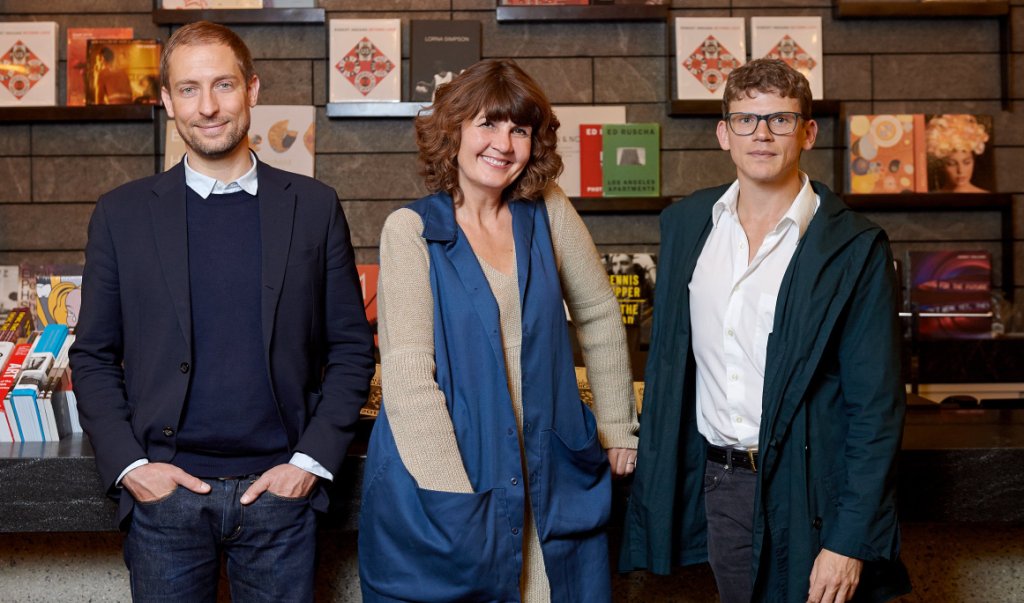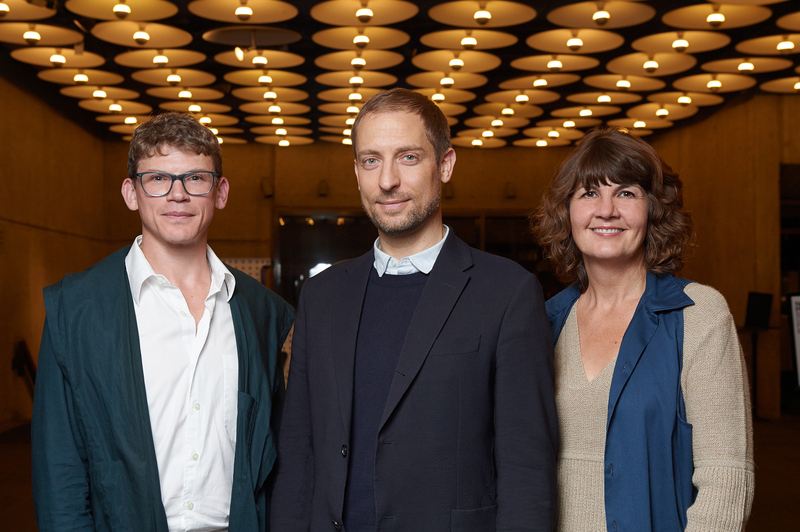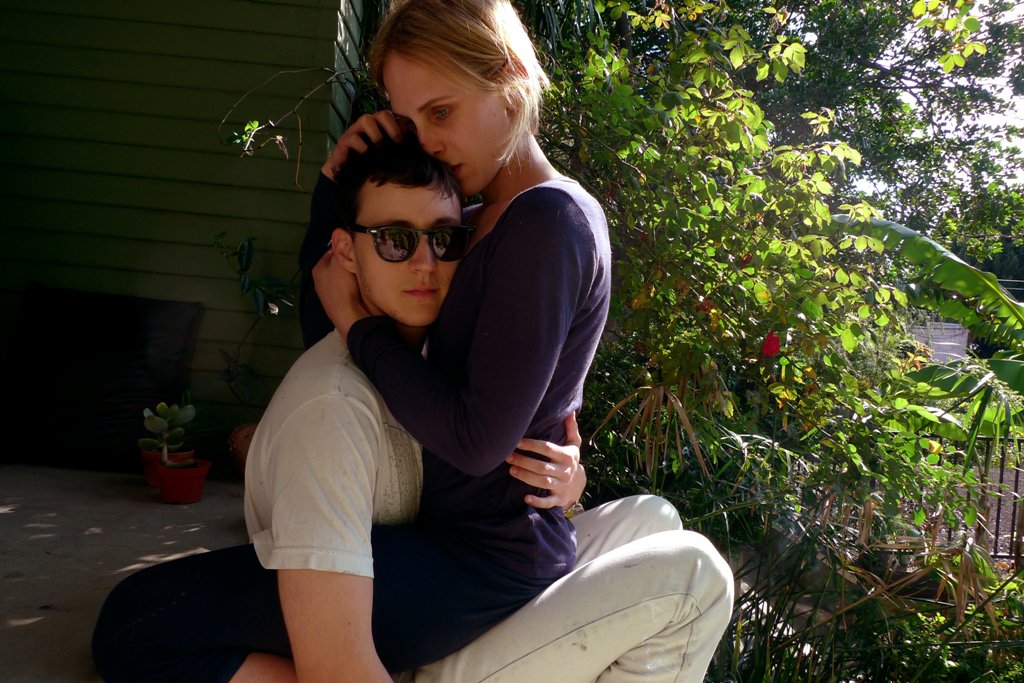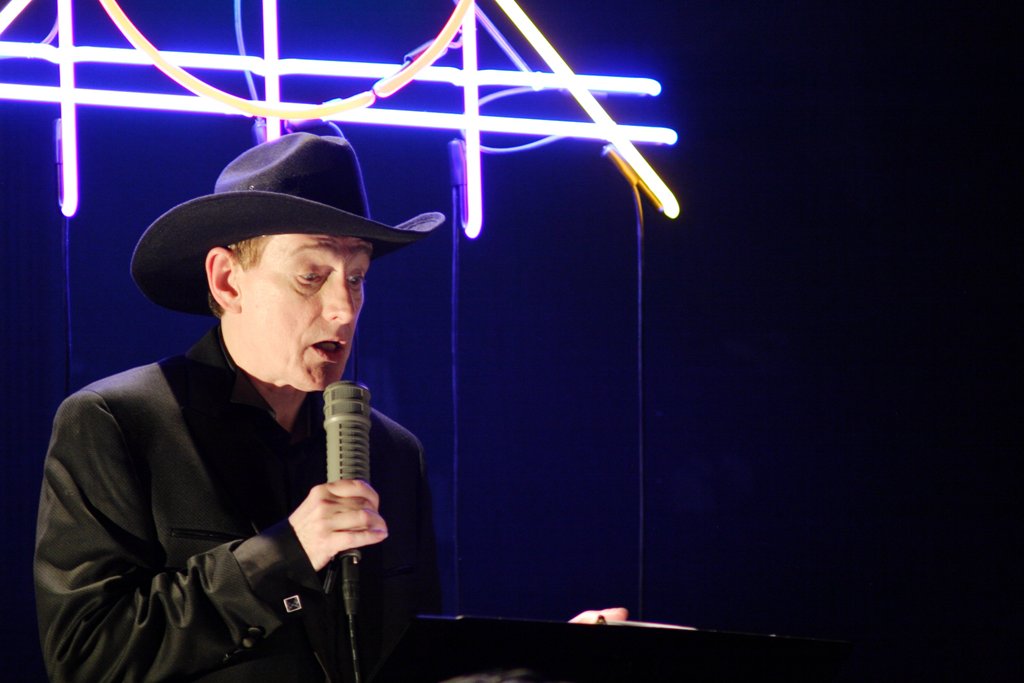
What is wrong with fragmentation? 2014 Whitney Biennial

An active painter and professor from Chicago, an associate curator from Philadelphia and a British curator working at the media and performance department of the MoMA will curate the upcoming 2014 edition of the Whitney Biennial. It is the first time no one of the staff of the Whitney Museum itself is involved. Will it make a difference?
An interview with Anthony Elms (Associate Curator at the Institute of Contemporary Art, Philadelphia), and Michelle Grabner (artist and Professor in the Painting and Drawing Department at the School of the Art Institute, Chicago). Stuart Comer (Chief Curator of Media and Performance Art at MoMA) could not join the discussion.

The press release states that you were selected to “represent a range of geographic vantages and curatorial methodologies”. How would you define your different vantage point and methodology?
I am the first actively exhibiting artist to curate the Whitney Biennial, exhibiting in galleries and institutions. So I want to approach this curatorial project from the perspective of an artist, to develop an exhibition with artists in mind. I approached this exhibitions thinking that artists would be my primary audience. I did not build this exhibition with critics or other curators in mind.
I like people who are invested in multiple mediums. I am invested in people who, even if they are a painter or a sculptor primarily, take strong directions or influences from multiple other forms. I like borders that are fuzzy. I am always attracted to what I do not understand. I believe the most important is always the overlooked.

Michelle, how will your practice as an artist help and inform your work as a curator?
I selected artists who are still informing my own studio practice. I am attached to painting, craft and criticality in my own work and in others. You will see a great deal of this sort of work on the 4th floor.
Anthony, you have worked for a long time independently and with a focus on smaller spaces, “off-programs” so to speak. How will this interest of yours influence your work for the Biennial?
This is a tough question to answer in any way other than generalities. My interests influences my work at the Whitney Biennial the same it influences all the decisions I make when I curate at the Institute of Contemporary Art, University of Pennsylvania, where I am employed, or when I write independently, or when I independently publish an artist’s book, and all the time. How can I know what I would do if my interests were different? Difficult and not readily valued gestures are the least likely to have strong institutional support. I think it is important to put those gestures in institutions, if only briefly, to see how they function. To view the differences between the desire of an institution and a desire that isn’t so readily institutionalized or cleanly packaged.
I like the materials I like, and I do not think ambition always comes in large flashy packages. Sometimes it is quiet, stubborn, and squirrely. In my catalog essay I use a thought by Susan Howe to describe what I am looking for: “I believed in an American aesthetic of uncertainty that could represent beauty in syllables so scarce and rushed they would appear to expand though they lay half-smothered in local history.”
I don’t think there is anything small or off-program about desiring such a space.

The 2012 Whitney Biennial was highly appraised. What will you learn from that success?
2012 did a great job redirecting the discourse in contemporary art to performance and the idea of the studio; a correction to the market driven frame that commands much discourse.
That careful attention to artists and localized aesthetics pays off in the end.
What do you consider key developments and defining trends at this moment within the American contemporary art scene?
The diversity of the free market.
Some bullet points: That by and large critique is running its due course and has lost a lot of its value or interest or ability to be a criticism of anything. Art involving critique is now often more ruled and conservative in its function than the oldest formalism. Certainly it lacks any desire or hope for the imagination. That social practice needs to stop practicing: get to work or get off the pot. The only cynicism worth expressing is a cynicism that isn’t afraid of crying. That resonant voices leave a presence behind. That history moves forward leaving many pockets that need to be emptied and brought to light. That how we narrate and frame and listen says a lot about what and who we value. That microcosms are not the same as pluralism or ignoring large social structures.
I like to share with you a thought the artist John Miller shared with the writer Maria Fusco some years ago when discussing artist’s books: “We tend to presume (and as an artist I’m inclined to presume) that the relevance of art should be long range. [That] if anything, it should become more relevant as time goes by and, therefore, qualify to be preserved. That may not be the case.” We need to decide how to move from that understanding to another way of thinking what art does on a day-to-day basis.
How do you deal with the ever-present risk of fragmentation when multiple curators are involved?
Because the exhibition is organized structurally within the Breuer Building, each curator given a different floor, the feeling of fragmentation will give way to three distinct visions. I anticipate that there will be a great deal of critical comparison between the different floors.
The artists will provide coherence. And what is wrong with fragmentation?
Have you divided tasks and area’s and topics?
We did not divide tasks or areas. In essence we did each put together our own version of the biennial. Yes, with knowledge of what the others were doing or where they were heading, but without dividing.
What part of the projects you are now developing are you most exited about and happy to be making public soon?
In addition to the real space of the 4th floor gallery, the catalog presents a wealth of parallel content. Each of my 53 artists contributed a conversation with a person of their choice, a designer, a writer, a spouse, an athlete, or a friend. It is full of rich content and it will be a great compliment to the many paintings, sculptures and photographs that inhabit Breuer’s extraordinary volumes.
2014 Whitney Biennial , New York
March 7 – May 24
Maaike Lauwaert


